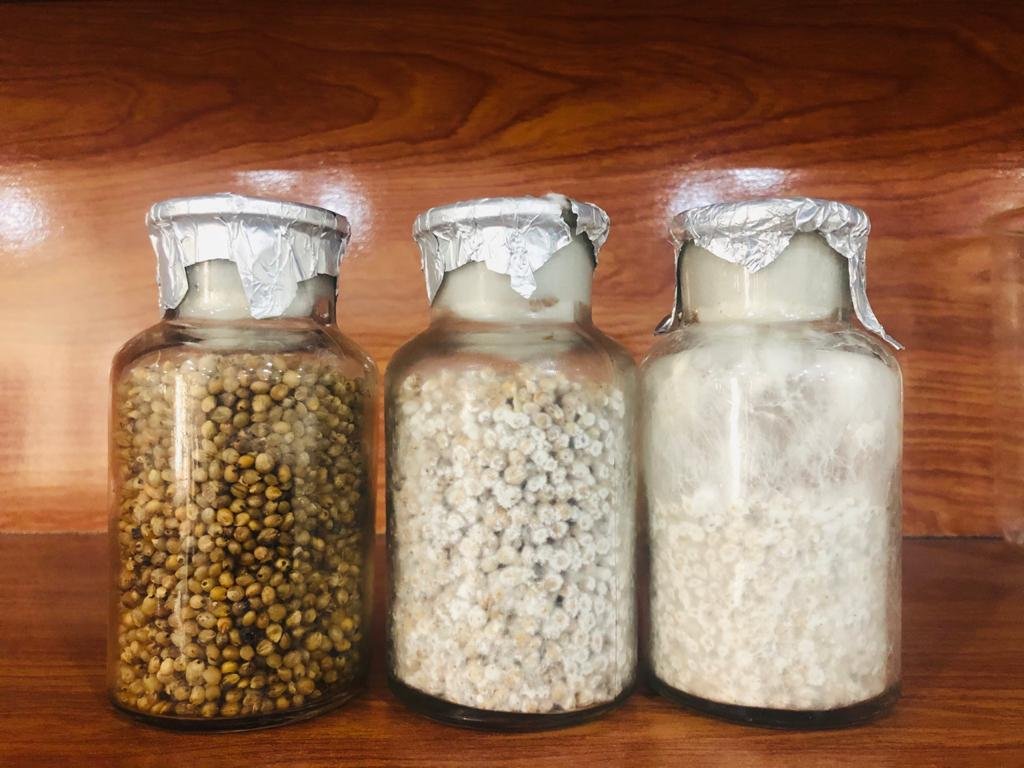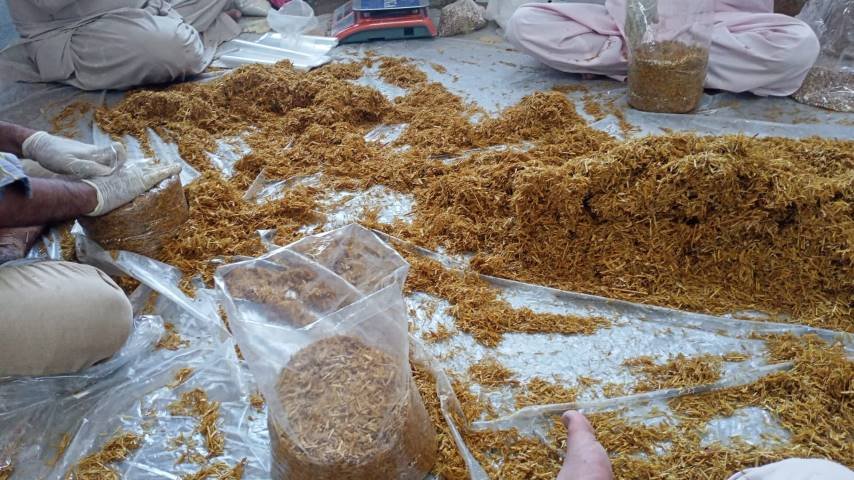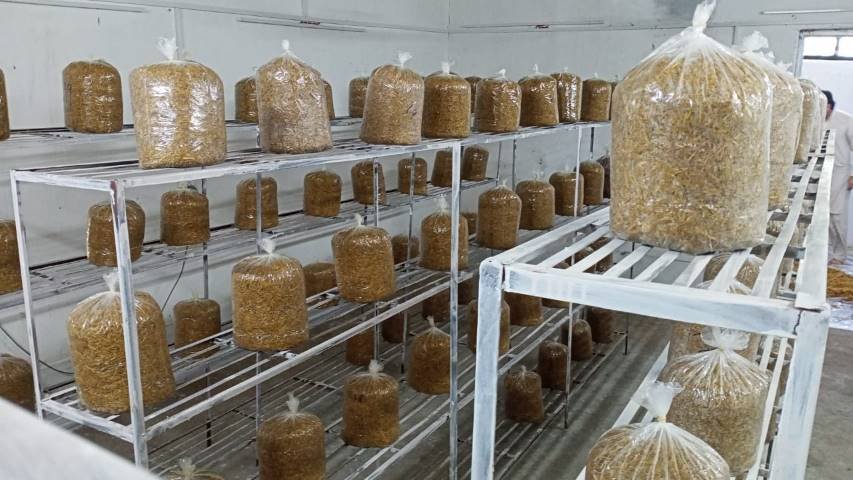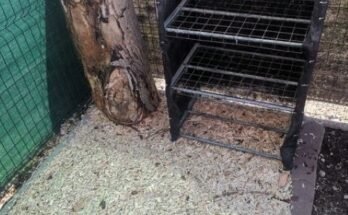Oyster mushrooms (Pleurotus ostreatus) are extremely popular for their delicious taste and nutritional value. Oyster mushrooms offer multiple health and medical benefits because they are super loaded with vitamins, minerals, fiber, and several other important nutrients. The protein value of oyster mushrooms is equivalent to animal meat. The demand and market for oyster mushrooms are increasing rapidly.
Getting the maximum benefit out of your mushroom cultivation is hard but it is achievable. To get the highest return from your oyster mushrooms you need to be better and better at performing all tasks of the cultivation process.
If you are looking for obtaining a higher yield of oyster mushrooms it means you are already familiar with basic oyster mushroom growing practices. We recommend you use proven strategies like those practiced by successful growers. In mushroom cultivation, the selection and preparation of substrate play the most important role.
What is a mushroom yield?
The mushroom yield is simply the amount of fresh mushroom fruit you can obtain from a growing space and substrate. The total mushroom yield is calculated by counting the total weight (in grams) of harvested mushroom fruit from all flushes.
If you are growing oyster mushrooms for generating revenue, then it is desirable to get maximum yield. A larger oyster mushroom yield will give you more profit from your oyster growing business.
How to increase oyster mushroom yield?
In this article, I will share a few useful strategies that you can apply to your mushroom growing business to obtain a higher yield. I will recommend you use a combination of all these strategies because they are interdependent. The combination of all strategies will push the yield to the highest.
Choose a high-yielding oyster species
The first thing you should consider is to select the right oyster mushroom species. Within the oyster family, there are different species with different yield potentials. All these oyster varieties are distinct in color and appearance and equally rich in nutrition.
Let’s look at the list of a few edible oyster mushroom species.
- Pearl Oyster (Pleurotus ostreatus)
- Golden Oyster (Pleurotus citrinopileatus)
- Blue Oyster (Pleurotus ostreatus var. columbinus)
- Pink Oyster (Pleurotus salmoneo stramineus)
- King Oyster (Pleurotus eryngii)
- Phoenix Oyster (Pleurotus pulmonarius)
If you are aiming at obtaining a higher yield you should choose a high-yielding oyster species. Try to do a little bit of research on the yield potential of oyster mushroom species and select the best one. Generally, pearl oyster (Pleurotus ostreatus) has a high yield potential compared to other oyster varieties. Also, make sure the oyster species you chose to grow have a good market value to make your oyster growing business a success!
Look for a fresh and viable spawn
Spawn works like a seed for growing mushrooms. The spawn you choose to grow can have a huge impact on oyster mushroom yield.
The process of growing mushrooms starts with the selection of a good quality fresh spawn. Spawn quality is considered the most important part of oyster mushroom production. Always purchase the spawn from a trustworthy dealer and make sure the spawn is not so old. If you will buy the spawn from a credible dealer there will be less risk of ending up growing the wrong oyster species.

A freshly prepared spawn will give a higher yield potential compared to an old spawn that has been stored for a long time. If the spawn is too old it will have a poor mycelial run, pinhead, and fruiting body formation.
The second most important thing is the quantity of spawn to be used. The lesser mushroom yield was recorded when the low quantity of spawn was used for growing oyster mushrooms (1). Make sure you use an adequate quantity of spawn. The oyster mushroom spawn should be used at a rate of 70 grams per kg compost to obtain a higher yield. It will also increase the number of flushes and the number of fruiting bodies per bag.
Use a nutrient-rich substrate for growing oyster mushrooms
The yield of oyster mushrooms is primarily dependent upon the substrate. According to several studies it has been reported that the yield attributes of oyster mushrooms are significantly affected by the type of substrate.
The substrate is rich in organic matter and nutrition that is required for the growth and fruiting of oyster mushrooms. Different substrates have different nutritional values. You need to figure out which substrate is the optimum substrate for your mushrooms. It will be appropriate if you use the most abundant substrate in your area because it will be easily available plus the substrate must have a good yield potential.

Oyster mushrooms can grow on a variety of substrates including sugarcane bagasse, cottonseed, paper waste, cotton waste, rice husk, wheat straw, rice straw, sawdust with a varying yield performance. All these substrates are rich in nutritional elements and have been tested to provide a good yield of several types of edible mushrooms.
Read more about preparation of straw substrate here.
Cottonseed is one of the best substrates for growing oyster mushrooms. It contains hot water and alcohol extracts that can be easily utilized by mushrooms. Cottonseed is also very conducive for the pasteurization or sterilization process because it emits extra heat by itself. Cottonseed in comparison to paper waste, sawdust, and wheat straw gave a significantly high biological yield. It also promoted better mycelial growth, pinhead formation, and the development of fruiting bodies (2).
Rice and wheat straw are the two most commonly used substrates for growing oyster mushrooms. They are inexpensive and easily available. According to a study wheat and rice straw gave better mycelial growth, pinhead formation, and yield of oyster mushrooms than other substrates (3).
Add supplements to your substrate
Supplementation is the addition of a nutrient-rich formulation to the substrate for obtaining a higher yield. Different carbohydrate and nutrient-rich supplements are available with a substantial effect on the yield and quality of oyster mushrooms.
The process works by providing rich nutritional support for stronger and quicker mycelial growth with larger and healthier fruits. Supplementation is an exciting subject and very few growers dig into the details of how it works.
Though substrates used for growing oyster mushrooms are already rich in nutrients, however, supplementation can provide an extra dose of nutrients to promote a luxurious crop. Mushrooms growers use supplements to get the best yield. The most commonly used supplement is bran. Typically, wheat or oat bran is used for increasing the nutritional value of the substrate.
However, too much supplementation should be avoided. Increasing the amount of supplementation will have detrimental effects, it will increase the risk of saprophytic contaminants that will ultimately diminish the yield.
Use supplementation carefully, start with a small amount and keep increasing slowly to get the highest yield.
Timing your harvest
The harvesting time has a significant impact on mushroom yield. Picking the mushroom too early and too late will reduce the overall yield of oyster mushrooms. Early picking will give small-sized fruit decreasing the biological efficiency. Late picking will result in low-quality mushrooms.
The right time to harvest mushrooms will depend upon the oyster mushroom species and the ways you plan to store your oyster mushrooms before consumption.
A general rule of thumb is to harvest oyster mushrooms when they start the caps from convex to concave or they start flattening at the top and the edges. If you will delay harvesting the mushrooms they will turn darker and lose their firmness which will reduce their market quality.
Bottom Line
The mushroom growing business is becoming increasingly popular. People are widely consuming mushrooms in their daily diet. Growing mushrooms is easy and it can give you a quick return with a minimum investment. To get the maximum benefit out of your mushroom growing business you must combine all the above-mentioned strategies together. You must use the right spawn, substrate, and supplement level for the oyster mushroom.
References
- Pal, J., Sharma, R., Lal, M. and Suman, B.C., 2017. Effect of different spawn rates and substrate supplementation on yield of Indian Oyster mushroom, Pleurotus pulmonarius (Fr.) Quel. Journal of Applied and Natural Science, 9(3), pp.1406-1410.
- Girmay, Z., Gorems, W., Birhanu, G. and Zewdie, S., 2016. Growth and yield performance of Pleurotus ostreatus (Jacq. Fr.) Kumm (oyster mushroom) on different substrates. Amb Express, 6(1), pp.1-7.
- Yang, W., Guo, F. and Wan, Z., 2013. Yield and size of oyster mushroom grown on rice/wheat straw basal substrate supplemented with cotton seed hull. Saudi journal of biological sciences, 20(4), pp.333-338.




